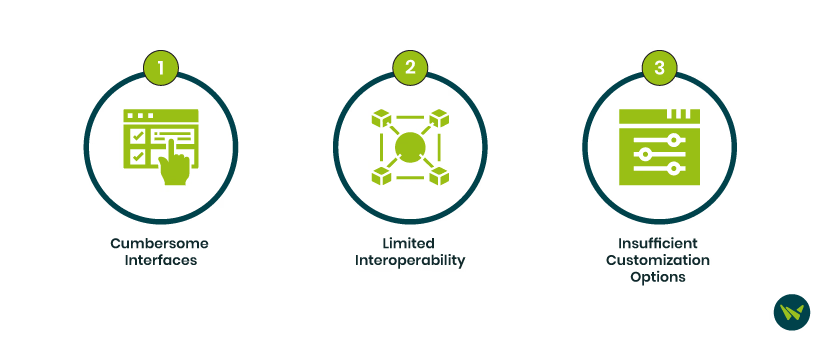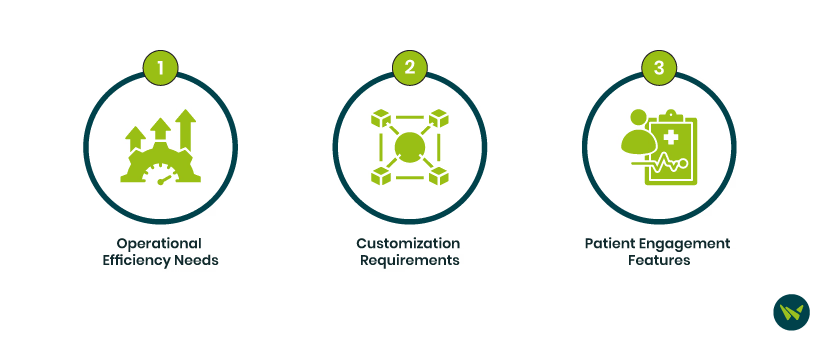
Electronic Medical Records (EMRs) have become an industry standard when it comes to improving operational workflows, enhancing patient care, and strengthening financial management. For cash-based practices, the demand for dependable and efficient EMR systems is particularly significant. Cash-based practices, unlike insurance-based ones, rely on simplified processes and direct financial transactions to maintain smooth operations.
Usability lies at the heart of a well-functioning EMR system, influencing operational efficiency, patient satisfaction, and financial stability. A well-designed EMR minimizes administrative burdens and allows practitioners to dedicate more attention to their patients. When usability falls short, practices risk reduced efficiency, declining patient trust, and financial challenges.
In this blog, we will explore the general sentiment surrounding EMR usability, key principles that define an effective system, common challenges faced by cash-based practices, and specific considerations to keep in mind when evaluating EMR solutions.
We reached out to over 30 cash-based practice owners to gather their thoughts on EMRs. Their feedback has been mixed, highlighting both the potential benefits and practical limitations of these systems.
Widespread Criticism
The perception of EMRs among healthcare professionals is often critical. Many practitioners believe EMRs place excessive emphasis on billing capabilities rather than clinical usability, which results in frustration and inefficiencies in everyday workflows. For cash-based practices, this imbalance can lead to additional administrative tasks that take emphasis away from patient interactions.
Moreover, the design of many EMRs has been faulted for creating overly complicated workflows. Difficult-to-navigate interfaces and rigid documentation requirements can impede the delivery of efficient and personalized care.
Mixed Reviews On Specific Systems
Some EMR systems, such as ‘Epic’, are frequently highlighted in usability discussions. Epic EMR is widely recognized as a prominent system within the healthcare sector, celebrated for its extensive features and reliability. However, some users have expressed concerns about its complexity and focus on billing functionalities, which can make navigation challenging for certain workflows.
While many users acknowledge improvements over traditional paper charts, there is still room for growth in creating a more intuitive and user-friendly experience for all practitioners.
The practitioners we connected with use these principles to assess the effectiveness of the best EMR for cash-based practices in meeting their operational needs and supporting efficient practice management.
EffectivenessEffectiveness measures an EMR’s ability to assist practitioners in accurately completing essential tasks such as patient documentation, billing, and appointment management. For cash-based practices, accuracy in these areas is critical to maintaining financial transparency and avoiding errors. | EfficiencyEfficiency evaluates how quickly and easily users can perform routine tasks. Ideally, retrieving patient records or processing payments should take minimal time, allowing practitioners to allocate more time to patient care. Systems that complicate these tasks can disrupt the overall workflow of the practice. | User SatisfactionUser satisfaction represents the overall experience of interacting with an EMR. High satisfaction levels typically indicate that the system aligns well with user needs, supports their workflows, and minimizes frustration. Collecting and analyzing user feedback can help identify areas for improvement. |

The usability of EMRs often presents unique challenges for cash-based practices, which prioritize personalized patient care and operational efficiency. Below, we explore several key issues that these practices face:
Cumbersome Interfaces
Navigating complex EMR interfaces remains a persistent challenge. Systems with overly intricate designs or excessive documentation requirements often divert practitioners' focus from patient care to managing technical processes.
For cash-based practices, where direct interactions with patients are paramount, these inefficiencies can disrupt the overall experience and reduce service quality. Enhancing operational processes and prioritizing user-friendly designs are vital for minimizing such disruptions.
Limited Interoperability
Cash-based clinics often require EMR platforms that can fluidly integrate with other systems, such as billing software and scheduling tools for enhanced workflow efficiency and coordination. Limited interoperability can create bottlenecks, forcing staff to rely on manual workarounds that compromise productivity. Ensuring EMRs work harmoniously with other essential tools is vital to maintaining operational efficiency.
Insufficient Customization Options
Every cash-based practice operates differently, and EMRs rarely meet all their requirements. Insufficient customization options can result in workflows that are misaligned with the practice’s unique requirements. EMRs offering configurable templates help align with specific practice models, ensuring a smoother operational fit.

Specific considerations for cash-based practices revolve around tailoring operational, customization, and patient engagement capabilities to meet their unique requirements. Each aspect contributes to creating a smooth experience for both providers and patients while ensuring sustainability and growth.
Operational Efficiency Needs
Operational efficiency is a fundamental requirement for cash-based practices. EMRs for cash-based practices should include integrated billing systems that enable real-time payment processing and invoicing. Efficient scheduling and appointment management are also important. Systems that provide quick access to schedules and automated appointment reminders can significantly improve practice workflows.
Customization Requirements
Cash-based practices often require adaptable workflows. EMRs offering configurable templates for documentation and billing processes allow practitioners to create systems that fit their specific practice models. This flexibility is essential for maintaining efficiency and delivering consistent care.
Patient Engagement Features
Patient engagement is a vital aspect for cash-based practices, and an EMR should provide tools that grant patients access to their health records, appointment schedules, and secure communication channels with providers. These features promote transparency and foster trust, improving patient retention in a cash-based setting.
For cash-only medical clinics, the usability of an EMR has a direct impact on operational effectiveness, quality of care, and financial success. Systems with intuitive design, efficient workflows, and solid patient engagement features are better equipped to address the unique demands of these practices.
Ongoing feedback and iterative system updates are essential for ensuring EMRs continue to meet user expectations. By focusing on usability and incorporating user feedback, EMR developers can tweak their solutions to effectively support the goals of cash-based practices and boost both practitioner and patient experiences.
